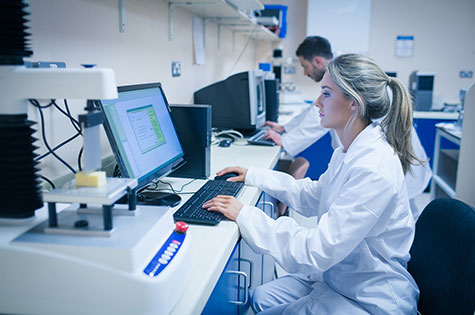Nanotechnology and Food Safety: Could Transparency Earn Back Consumer Trust?
By Brita Ball
Nanotechnology is transforming the food industry, improving shelf life, contributing to safe, wholesome food and creating controversy, as recent media reports about nanoparticles in baby formula demonstrate.
This fast-growing field is the science of particles and structures that are the size of milk protein molecules, viruses and DNA strands—a millionth of a millimeter—and they are being intentionally used in pharmaceuticals, cosmetics, consumer goods and more. In the food industry, new applications are primarily related to food safety and packaging, but the number of foods designed using nanotechnology is increasing as well.

The market for engineered nanofoods is huge but potential toxicity of nanomaterials is a concern and transparency should be a priority for the food industry. Here are three ways nanomaterials are currently being used:
Nanotech in Food Safety
Improved food contact surfaces containing nanosilver can reduce the risk of biofilm formation by working at the atomic level to prevent bacteria from sticking to the surface. In addition, the use of nanosensors and magnetic nanomaterials have improved the ability to test for, and in some cases remove, contaminants in foods including:
• Allergens
• Pathogens
• Biological toxins and chemicals
• Economically motivated adulterants
These lab-based innovations are low risk to consumers. The food industry adopts them where the benefits are cost effective and meet company priorities.
Nanopackaging
Layers of nanoclay within food packaging films reduce permeability and slow the flow oxygen, increasing shelf life in passive packaging. Interactive “smart” packaging with nanosensors has a variety of applications. For example, it enables packaging to detect:
• Product ripening
• Gases related to spoilage
• Presence of specific pathogens or toxins
• Temperature and humidity changes
The current drawback to packaging applications is the uncertainty about the health impact of nanomaterials that may migrate from packaging into the food. Nano-engineered particles have the potential to be toxic due to increased bioavailability, the capacity to pass through cell membranes and their potential accumulation in organs.
Nanofoods
The commercial application of nano-engineered products in foods is in its infancy and primarily limited to nano-encapsulation of nutrients such as omega-3 fatty acids and probiotics. Commercial application of nanotechnologies could soon be used to:
• Improve taste, texture and/or colour
• Improve nutrient bioavailability and delivery
• Reduce salt, sugar and fat content
• Reduce cholesterol absorption
Food manufacturers appear reluctant to disclose information about their research on and use of nanotechnologies, feeding speculation and concern among consumer groups. Advocacy groups claim that nanoparticles have been added to hundreds of foods, although they neglect to say the most commonly reported additive is generally recognized as safe in the USA, a country that has had nano-sized particles for years. Still, the European Commission Scientific Committee has concerns about the nanohydroxyapatite that was recently found in baby food.
Consumer Confidence in Nanotech
Consumer confidence and trust are key to having new technologies accepted but lack of information, uncertainty about human and environmental safety, and suspicion of industry secrecy about nanotechnology serve to heighten consumer concerns. The food industry has an opportunity to provide information to create and maintain consumer trust in this area; failure to do so will make it hard to get consumer support for nanopackaging and nanofoods.
About the Author
Brita Ball, PhD, CTDP, ECPC, helps organizations improve their training effectiveness, food safety culture and bottom line. She is President of the international consulting firm Brita Ball & Associates.




